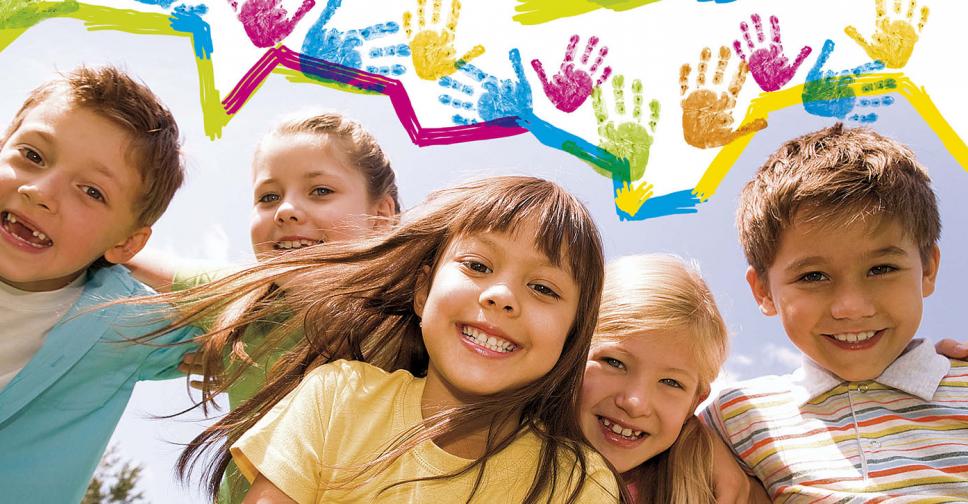
To cheer the older group in the garden, we suggest to consider the proposed sedentary games.
The content of the article
In order for the child to go to school is not just prepared, but also able to focus, concentrate attention, think and classify, for students of senior groups of preschool educational institutions, a whole range of tasks is offered. They are called sediments, because the emphasis is not done on physical data, but for comprehensive development.
Low-moving games in the senior group: Card file with goals
- We are looking for a couple
The game teaches the ability to classify, find interrelations, develops a small motorcy. It is necessary to choose objects (or just pictures with their images) associated with any signs. Babies can be divided into several teams, and you can also hold a "personal championship". The tutor alternately takes any of the selected items, and the child (or the team representative) in turn picks up a couple of it.
It is very good if the child will explain at what kind of properties or signs he combined these items into a pair. So gradually, laying out the already assembled objects or pictures, children will develop observation, learn to formulate and express their thoughts, argue their point of view.
- Ruclees
The feeling of collectivism, coherence in the movements, the ability to "adjust" the possibility of comrade and reckon with them - all this helps to learn from long familiar to all parents and grandmothers game.
Recall that her essence is that the children, holding hands and raising them up, pairs are built up by the corridor. Then the last pair, trying not to hurt the rest of the rest, runs through the created "corridor" and thus becomes the first.
So in turn pass all the pairs. From the side, this spectacle really resembles a smooth continuous course of a funny stream.
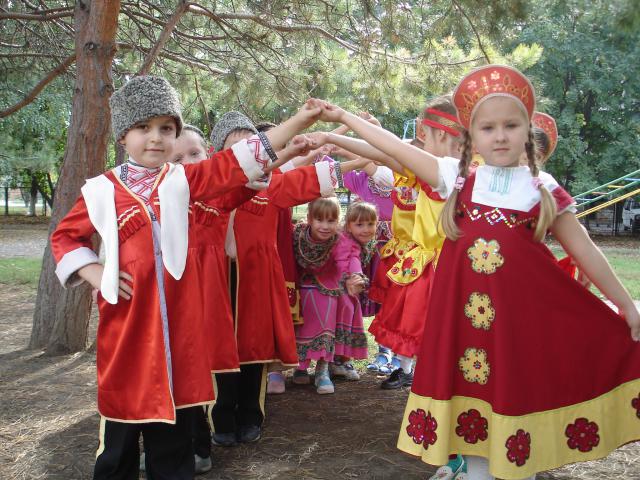
Ruclees
- Who left us?
The game for attentiveness, observation. When the kids are lined up in a circle, in the center its chosen master looks back and clogs. The tutor quietly shows one of the players to exit the room. When a child is as quietly removed, leading, opening his eyes, must determine who is missing in a circle. Naturally, everyone peeping is strictly prohibited.
- Who flies, and who is not?
Playing the concentration of attention, improved coordination of movements. One of the variations of popular children's games on the need for instant selection. Adult reads a long list of a wide variety of items and concepts, periodically including those that can be associated with flight: air ball, wings, airplane, rocket, etc.
The meaning of the game It is to unmistakably swear with your hands if a flying object is called. He loses the one who was mistaken and raised his hand with the name of the "flutter" subject.
- Hot or cold
The game is focused on the development of auditory and physical qualities. One of the participants comes out of the room, the rest of the kids are hiding in the room any toy, book, etc.
When a child returns to the hall and begins to look for a hidden thing, the rest of the kids suggest him with the words "hot", "very hot", "cold", "warmer", etc., depending on how close looking to the hidden item . Naturally, there is a strict ban on peeping for a child out of the room.
- Bite bumblebee
Children learn to proper coordination of movements, orientation in the surrounding space, develop attentiveness and auditory qualities.
The game is that the kids sit down in a circle, rolling between themselves the ball. You can repel the ball exclusively with your feet, while it is forbidden to stop the ball. If any of the players did not have time to push the ball and he fell back, it means that this child bruoked with a bumblebee. He ceases to participate in the game until Shmel is "biting" the next player.
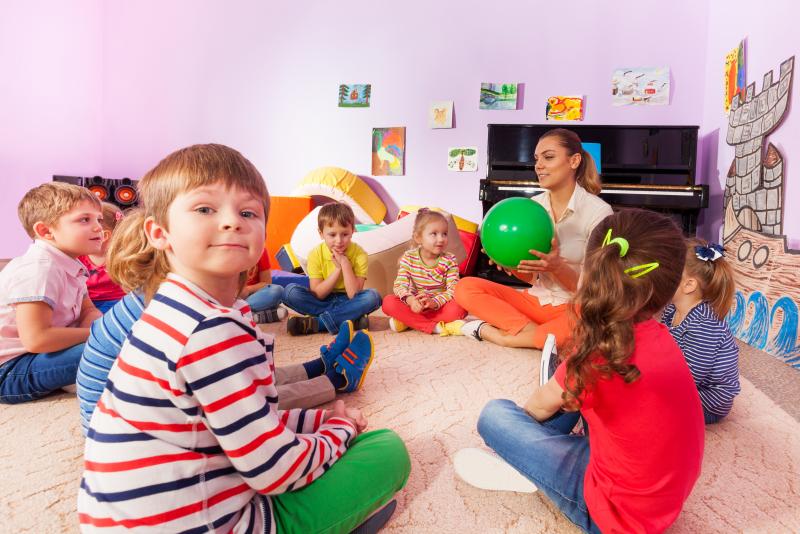
With a ball
- Find differences
The main tasks of this game are the development of the child's attention, its ability to perceive the signal to action. Carefully looking at each other, the children choose the lead, which should come out of the hall. At this time, the rest of the kids change something in themselves: they tie a bow, which was not, change clothes, bandaged her hand, etc. The leader who returned to the room calls the changes that occurred with the players. The next leading becomes the one in whose appearance is found most of all differences.
- Finish fairy tale
The game develops memory and fantasy in children, the vocabulary is replenished. The educator reads the children a fairy tale. In any place, it stops and offers the kids themselves to come up with a continuation of the plot.
This can be done in the middle of the dialogue of heroes, so that the children continue him, in the climax of or offering children to come up with the end of the story. You can also, after reading the fairy tale, to offer a player to come up with its continuation, for example, what happened to the heroes in a week, month, year.

Fabulously
- In the theater of Shadows
The main purpose of this game is the development of shallow motility of the hands and imagination. In a sufficient dark room you need to hang the screen, at a distance of several meters, turn on the table lamp or flashlight. Then suggest children to move their hands in the space that separates the screen and the lamp, so that the shadow falls on the screen.
These movements must create animal figurines on the screen: dogs, snakes, birds, etc. To make the game even more exciting, you can also ask children to play scenes, inventing the dialogues between the heroes created.
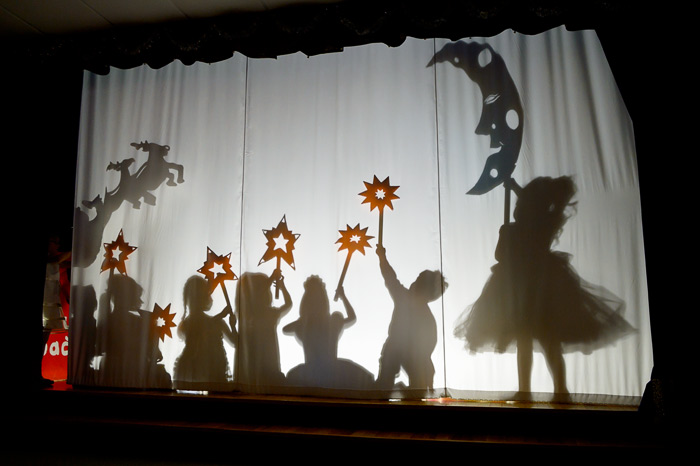
Fantasy
- Little Cinderella
Game on the development of shallow motility hands. The tutor mixes on the table two or three types of various croup (rice, millet, buckwheat, pell, etc.). He annoys that inadvertently mixed them, and now he does not have time to disassemble that the children can get their lunch on time. Kids should help adult split all at different tanks.
- Turn in animals
The game aimed at the development of attention. Children line up in a circle and start walking. The teacher calls the animal, and the kids must portray it, after performing the movements, characteristic of this animal: Jumping like a hare, waving his hands, like bird wings, etc.
- Color with the mind
The purpose of the game is to develop the attention of the child. The tutor writes alternately on a sheet of paper. Large letters, alternating them with numbers. Children must circle numbers in one color, and the letters are different. You can complicate the task, proposing, in addition to using different colors, cut letters and numbers with different geometric figures: circles, triangles, squares, etc.
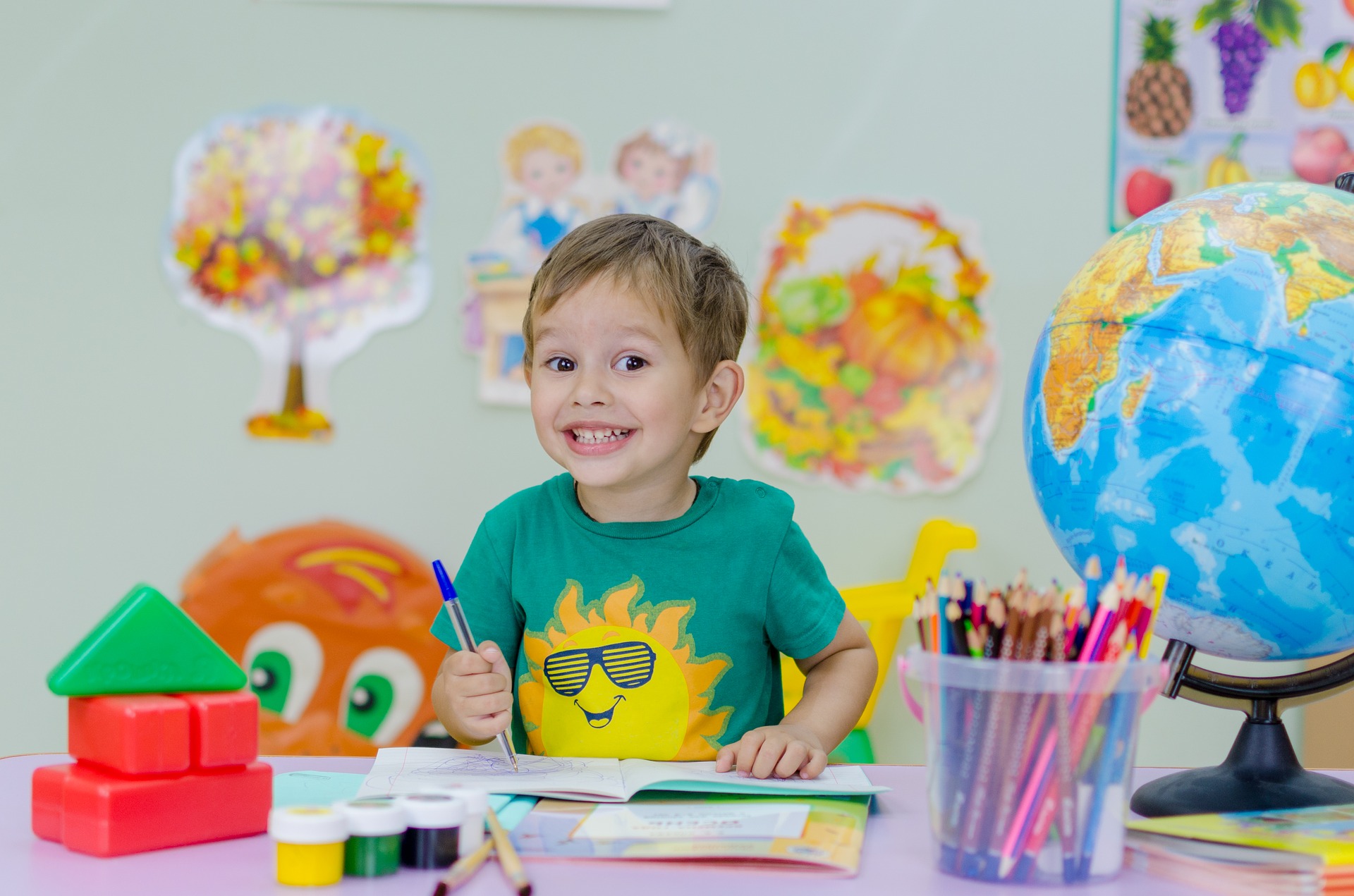
Coloring
- Guess the animal
The game is aimed at the development of attention and observation. Children in turn perform in the role of leading, depicting any movements or actions characteristic of a particular animal. For example, the closure of the bear, the grinding of the monkey, wash the cat, etc. Wins the one whose actions were the most recognizable and guess.
- Magic figures
With this game, children develop logic and imagination. The teacher gives each child sheets of paper with geometric figures drawn on them. Children are offered using these figures as a basis, add drawing. From a rectangle, for example, you can create a house, from a circle - snowman, etc. Wins the one who will create the most drawings.
- Flower
The main goal of the game is aimed at the development of thinking, observation. The tutor offers children to "plant flower beds". For this, children must draw a few "flower" with different colors. In the round, for example, there must be flowers with long petals, and in square - with round, in a small flower club "put" yellow flowers, and in large - red, etc.

Draw
At the end, you can ask a few additional questions: can any of these colors grow on several flower beds at once, why? There is still a large number of games during which the child learns perfection, attentiveness, observation, logical thinking.
